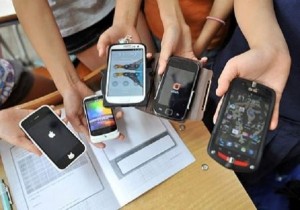SINGAPORE — Mobile phones and social media are saving thousands of lives in disaster-prone countries but many vulnerable communities still need to be equipped with modern communications, the Red Cross said Thursday.
In its latest World Disasters Report, the International Federation of Red Cross and Red Crescent Societies (IFRC) said the number of people affected by disasters dropped worldwide in 2012, although poorer rural areas were hit harder.
Far-flung countries like the Philippines and Indonesia are successfully tapping modern communication to gather and spread information when disasters strike, it said in the report released in Singapore and other cities.
But first responders in the world’s most impoverished nations remain encumbered by their lack of access to basic technological tools such as early-warning systems and network infrastructure, it said.
“Although the overall number of people affected by disasters decreased in 2012, the number of people affected in the poorest countries increased, with over 31.7 million affected,” the report’s editor Patrick Vinck said in a statement.
“They are also often the ones with the least access to technology.”
A total of 15,706 people were killed and nearly 139 million affected in 552 natural and industrial disasters in 2012, according to the report.
It lauded the widespread use of Twitter and text messaging in disaster-relief efforts in the Philippines when Typhoon Bopha slammed into the south of the country in December last year, leaving more than 1,800 dead and missing.
“Thousands of lives were saved because 99 percent of the population have access to a mobile phone and could receive early warnings and information on staying safe,” Bekele Geleta, secretary-general of the IFRC, said in a statement.
The report said studies showed many around the world were deprived of access to technology because of “inequalities across gender, income and urban/rural divides.”
It cited the example of the Central African Republic, where 47 percent of women living in the capital Bangui depend on others for all types of information, compared to 30 percent of men.
Nationwide, most of the poorest 20 percent of the population depend on others for information, while only six percent of the richest 20 percent were deprived of direct access to information.
“These differences may not be surprising, but they have important implications for an increasingly technological humanitarian world, namely the potential for digital exclusion of those most vulnerable to disasters,” it said.
It also warned that even the most cutting-edge technologies cannot replace the human touch needed to reach the most vulnerable during disasters.
“Even traditional means like radio fail to bridge the ‘last mile’ and reach the ‘information poor’,” it said.
In 2012, the Americas were hit the hardest in terms of damage caused by natural disasters, with Hurricane Sandy a key factor in the $103.6 billion in destruction incurred by the region.
Globally, disasters caused an estimated $157.6 billion worth of damage.
RELATED STORIES:
Death toll hits 150; quake affects 3M
DSWD opens new Twitter account to coordinate disaster relief after hacking attack
Facebook can help in disasters—academic
Social media major tool in disaster response
